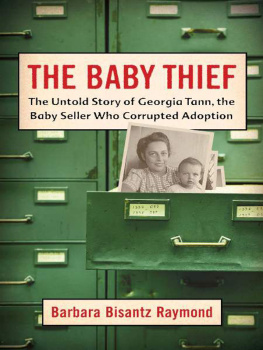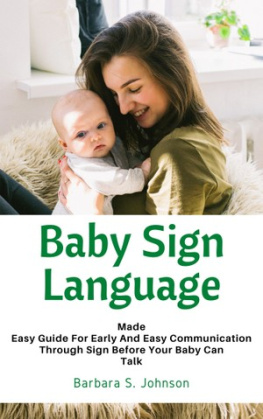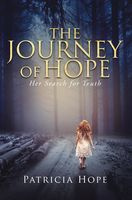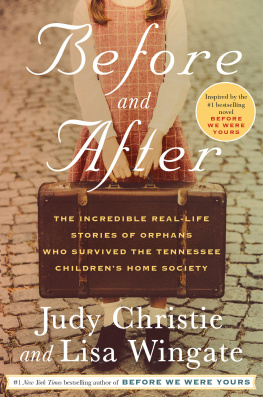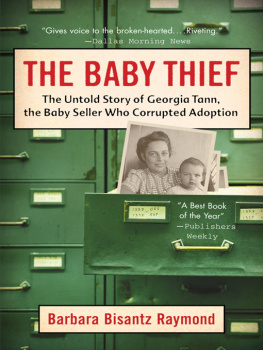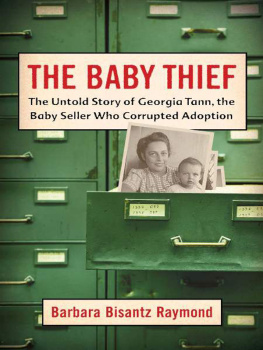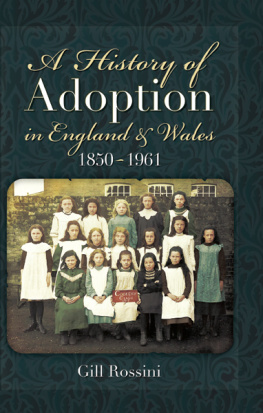Barbara Bisantz Raymond - 29 Apr
Here you can read online Barbara Bisantz Raymond - 29 Apr full text of the book (entire story) in english for free. Download pdf and epub, get meaning, cover and reviews about this ebook. year: 29 Apr 2009, publisher: Da Capo Press, genre: Non-fiction / History. Description of the work, (preface) as well as reviews are available. Best literature library LitArk.com created for fans of good reading and offers a wide selection of genres:
Romance novel
Science fiction
Adventure
Detective
Science
History
Home and family
Prose
Art
Politics
Computer
Non-fiction
Religion
Business
Children
Humor
Choose a favorite category and find really read worthwhile books. Enjoy immersion in the world of imagination, feel the emotions of the characters or learn something new for yourself, make an fascinating discovery.
- Book:29 Apr
- Author:
- Publisher:Da Capo Press
- Genre:
- Year:29 Apr 2009
- Rating:5 / 5
- Favourites:Add to favourites
- Your mark:
- 100
- 1
- 2
- 3
- 4
- 5
29 Apr: summary, description and annotation
We offer to read an annotation, description, summary or preface (depends on what the author of the book "29 Apr" wrote himself). If you haven't found the necessary information about the book — write in the comments, we will try to find it.
29 Apr — read online for free the complete book (whole text) full work
Below is the text of the book, divided by pages. System saving the place of the last page read, allows you to conveniently read the book "29 Apr" online for free, without having to search again every time where you left off. Put a bookmark, and you can go to the page where you finished reading at any time.
Font size:
Interval:
Bookmark:

THE BABY THIEF
The Untold Story of Georgia Tann, the Baby Seller Who Corrupted Adoption
Carroll & Graf Publishers
An Imprint of Avalon Publishing Group, Inc.
245 West 17th Street, 11th Floor
New York, NY 10011

Copyright 2007 by Barbara Bisantz Raymond
First Carroll & Graf edition 2007
All rights reserved. No part of this book may be reproduced in whole or in part without written permission from the publisher, except by reviewers who may quote brief excerpts in connection with a review in a newspaper, magazine, or electronic publication; nor may any part of this book be reproduced, stored in a retrieval system, or transmitted in any form or by any means electronic, mechanical, photocopying, recording, or other, without written permission from the publisher.
ISBN-13: 978-0-78671-944-0
ISBN-10: 0-7867-1944-3
eBook ISBN: 9780786733743
9 8 7 6 5 4 3 2 1
Interior design by Sue Canavan
Printed in the United States of America
Distributed by Publishers Group West
Its hard to understand, without being immersed
in the poisonous air of then.
Doris Lessing, Under My Skin, Vol. 1
I learned of Georgia Tann in 1990 from Alma Sipple, whod met her decades earlier. I was interviewing Alma for a magazine piece. She said she could still see Georgia: a stern-looking woman with close cropped gray hair, round, wireless glasses, and an air of utter authority.
She gained entry to Almas apartment in Memphis, Tennessee, by identifying herself as a social worker and orphanage director concerned about Almas ten-month-old daughter, who had a cold. After examining Irma, Georgia pronounced her seriously ill.
When Alma said she had no money for a doctor, Georgia offered to obtain free treatment by passing Irma off as her ward. She warned Alma not to accompany her daughter to the hospital: If the nurses know youre her mother theyll charge you, she said. Two days later she told Alma that her baby had died.
Alma didnt believe her. But neither frantic visits to Georgias orphanage, from which she was ejected, nor desperate trips to the police station, where she was ignored, nor haunting of hospitals and graveyards revealed the truth: that Georgia had flown Irma to an adoptive home in Ohio.
When I interviewed Alma forty-five years later she had finally found her daughter, but while the reunion had been happy their relationship was fragile. Irma was uncomfortable with the television coverage of the reunion that Alma had sought, and educated enough to intimidate a mother whod only finished sixth grade. What can I get her for Christmas? Alma asked me. Im afraid to insult her with my taste.
A year later Alma had a heart attack and called me from the hospital. She and her daughter were not in touch. Only someone whos lost a child this way can know how horrible it is, Alma said, crying. Theres a hole in me that will never be filled.
I couldnt forget the woman who had ruined Almas life and so many others. Georgia had arranged over five thousand adoptions between 1924 and 1950, many involving children she had kidnapped. She had molested some of the little girls in her care and placed some children with pedophiles.
Georgia had also caused so many child deaths that by the 1930s the official infant mortality rate in Memphis was the highest in the country. And the actual number of Memphis children who died was even larger than the official count, because Georgia failed to report many deaths. She also neglected to bury all of her dead children in the cemetery used by her adoption agency. They simply disappeared, a former Memphian told me.
Still, most of Georgias children survived, and grew up all across the country, many in her favorite markets, Los Angeles and New York. Those adopted by Joan Crawford, June Allyson and Dick Powell, and other celebrities were featured in magazines, and some have had distinguished careers. But most are seemingly ordinary people coping with the extraordinary fact of having been placed with adoptive parents unscreened for anything but wealth.
Some of these adoptive parents loved their new children and treated them well. But other children were made to serve as domestics and farmhands. Some were starved, beaten with hoes and razor strops, hung from hooks, and raped.
There seemed no bottom to the pain Georgia had caused, and I flew to Memphis, consumed by questions. And besides the questions about her and the consequences of her actions there was another one: why hadnt anyone stopped her? She had been expelled from Mississippi before moving to Tennessee. What had made Memphis ripe for her? And what aspects of her era had facilitated her crimes?
Only after situating Georgia within her context would I discover her other dimensionthe one that allowed her to hurt millions more people than those she directly touched. While building her black market business, she had invented modern American adoption.
Its hard to overestimate her influence. When she began her work in Tennessee in the 1920s, adoption as we know it did not exist. Eugenicists had made Americans afraid to adopt, and agencies like the Boston Childrens Aid Society were arranging a scant five adoptions a year. In 1928, however, only four years after Georgias arrival in Memphis, she arranged 206.
She did much more than popularize adoption. She commercialized it, charging adoptive parents large fees and marketing children in nationally syndicated newspaper ads.
Worse, she stole adoptees identities. To cover her kidnapping crimes, and to appease clients threatened by the possibility of their new children someday reuniting with their birth parents, she falsified adoptees birth certificates, sealing their true documents and issuing them false certificates portraying their adoptive parents as their birth parents.
The practice was approved by legislators who believed it would spare adoptees the onus of illegitimacy. All fifty states ultimately falsified adoptees birth certificates.
Georgias legacy has endured into the twenty-first century, and the vast majority of Americas 6 million adoptees are still legally denied knowledge of their roots, even after they become adults. Many cant find their birth parents or learn potentially life-saving information about their family health histories.
But finally, fifty-seven years after Georgias death in 1950, adoptees are escaping her influence. In a dramatic legislative and court victory in 1999, people who had been adopted in Tennessee won access to their original birth certificates and adoption records. Since the passage of the Tennessee open adoption records law, adoptees have won similar legal battles in twelve other states. They wont stop until Georgias legacy is eradicated throughout the nation.
Georgia accomplished all that her victims are fighting to undo through boldness, cunning, and the exploitation of her time and place. I began my research by studying the environment in which she had operated, paying a visit to the site of her orphanage on Poplar Avenue.
Georgias World
Georgias Home
T he Memphis I visited was very different from Georgias. Her orphanage or Home, the local branch of the Tennessee Childrens Home Society, was long gone, replaced by a rectangular structure housing the offices of the Baptist Brotherhood. Surrounding it were similarly modern and graceless buildings: a Taco Bell, Radio Shack and Payless Shoe Store, Mega-Mart and Kings Den Hair Salon. There was little evidence of the beautiful shade trees that gave Poplar Avenue its name. But nearby side streets contained lovely old homes with deep lots and gardens so lush they hushed the buzz of traffic. Ivy scaled trees whose trunks were taller than the homes: pin oaks, pecans, sweet gums, snow flowers, yellow pines, dogwoods, sycamores and, arching over all, elms that had escaped the disease that killed most others in the world. The air smelled of honeysuckle and pine.
Font size:
Interval:
Bookmark:
Similar books «29 Apr»
Look at similar books to 29 Apr. We have selected literature similar in name and meaning in the hope of providing readers with more options to find new, interesting, not yet read works.
Discussion, reviews of the book 29 Apr and just readers' own opinions. Leave your comments, write what you think about the work, its meaning or the main characters. Specify what exactly you liked and what you didn't like, and why you think so.

